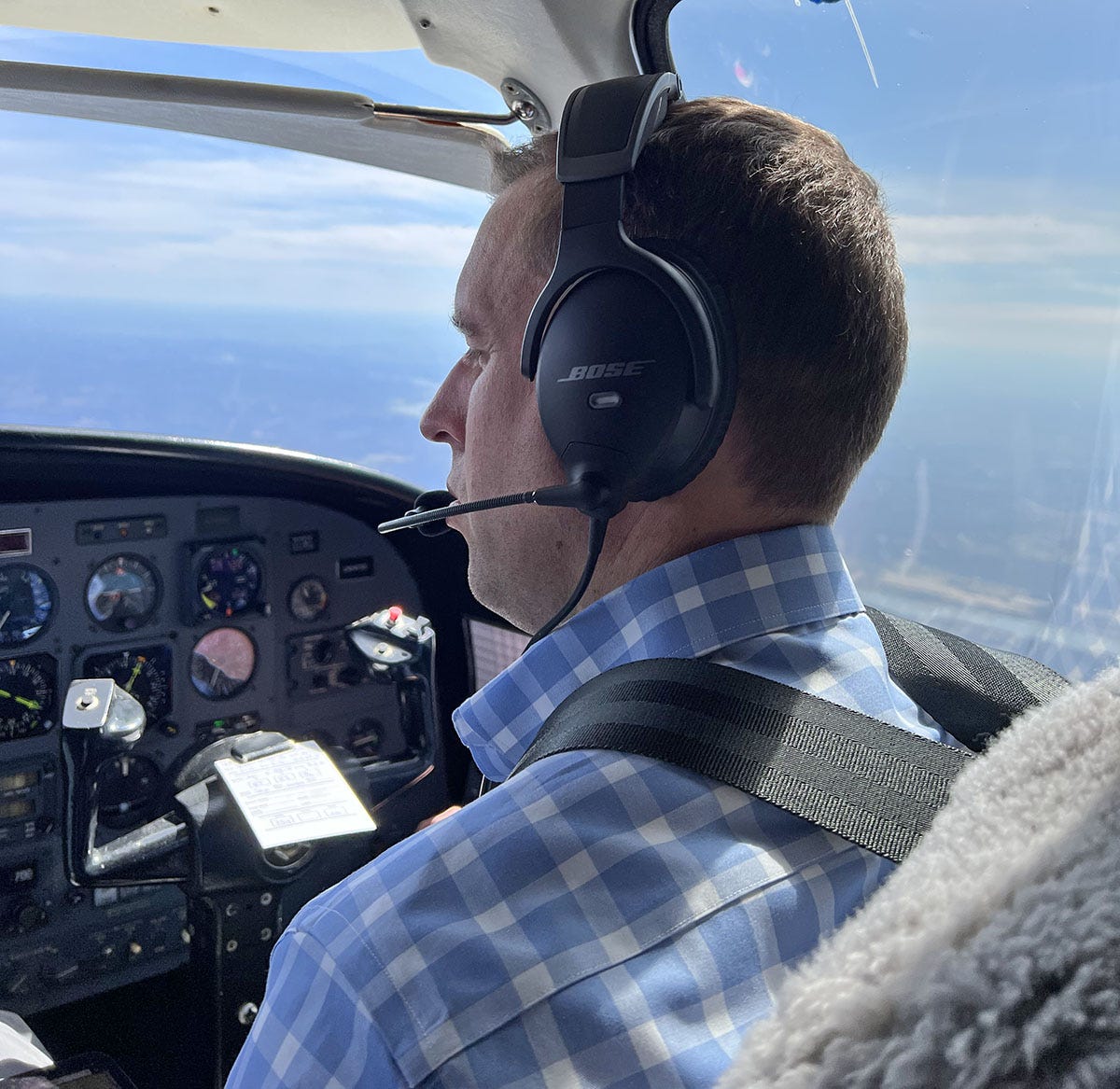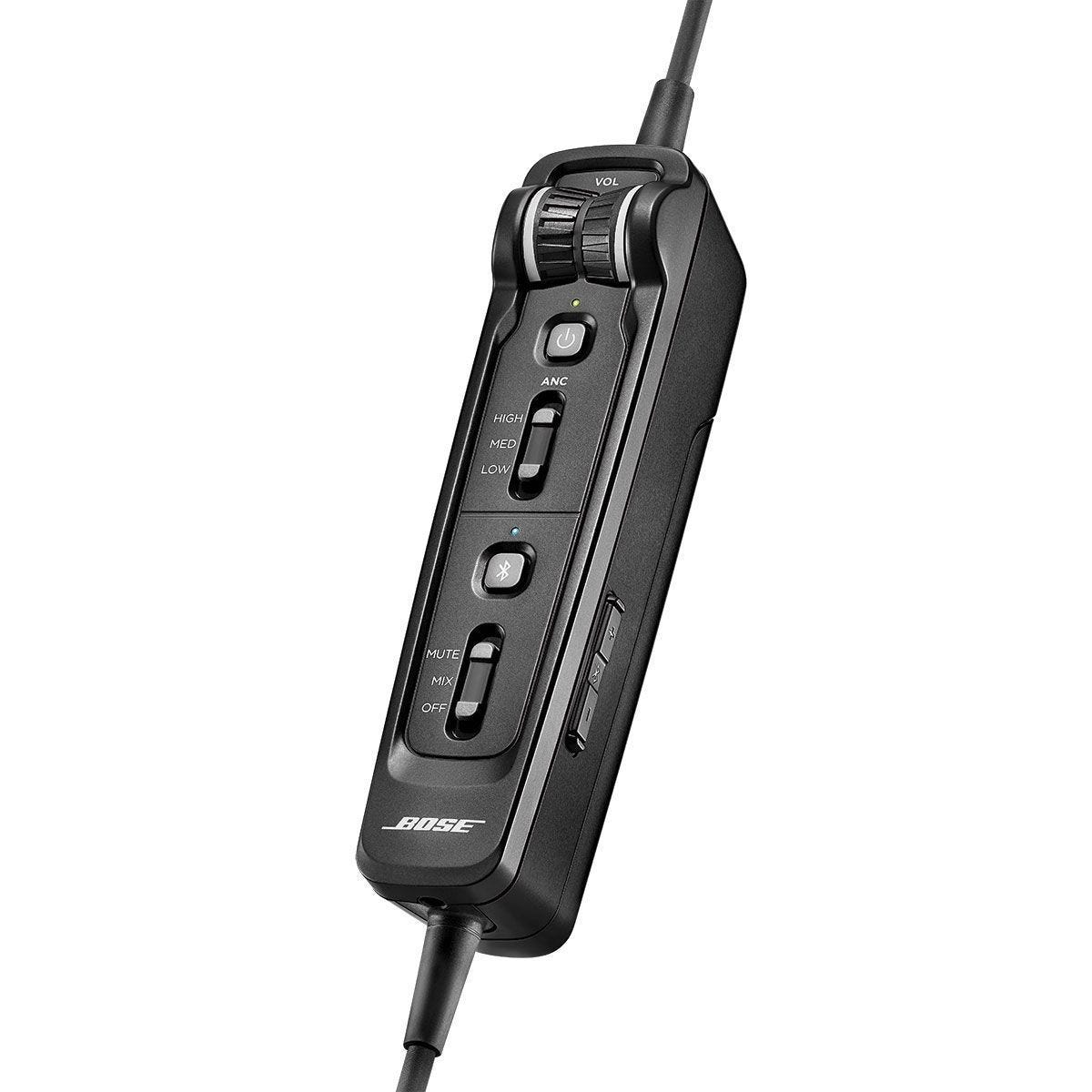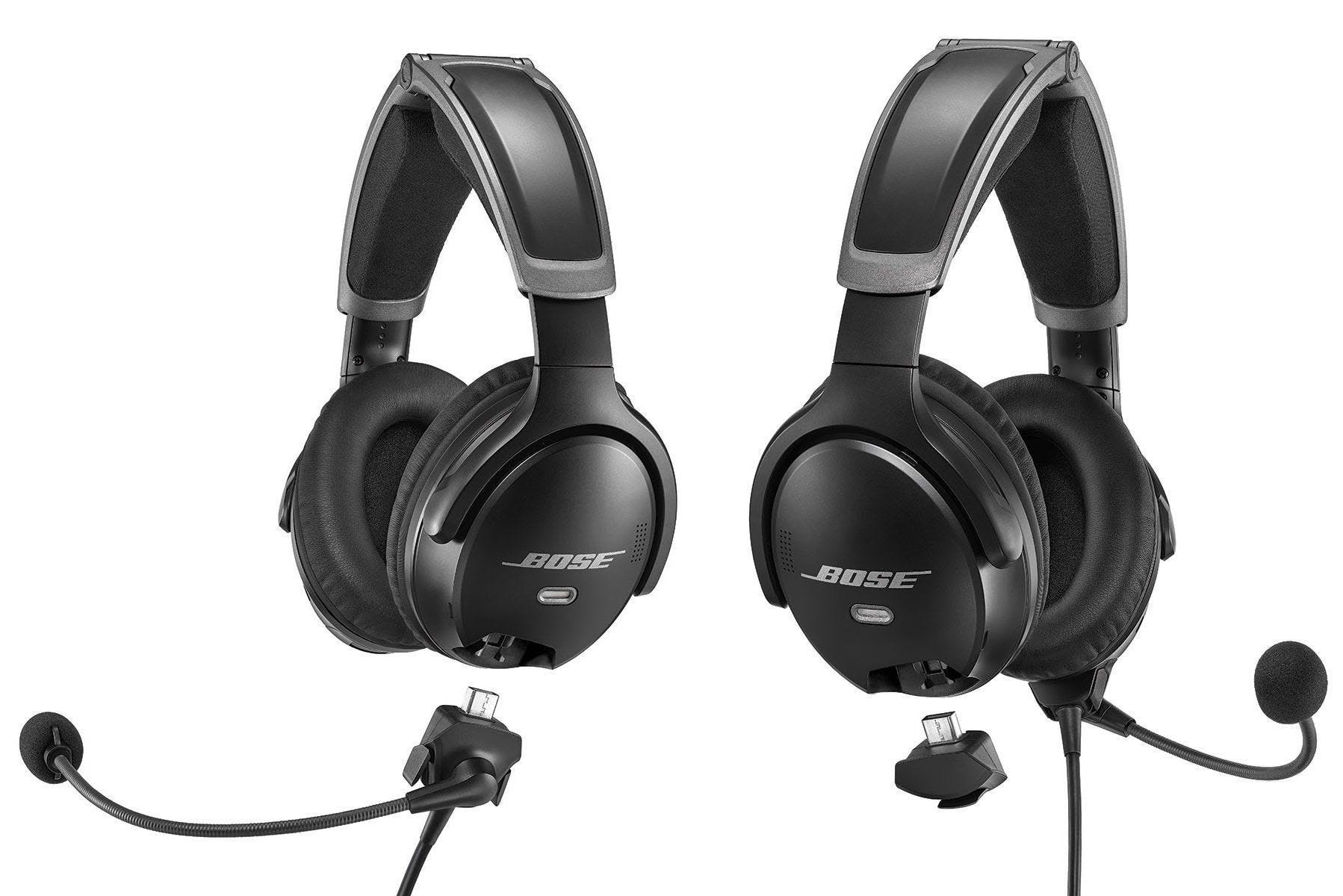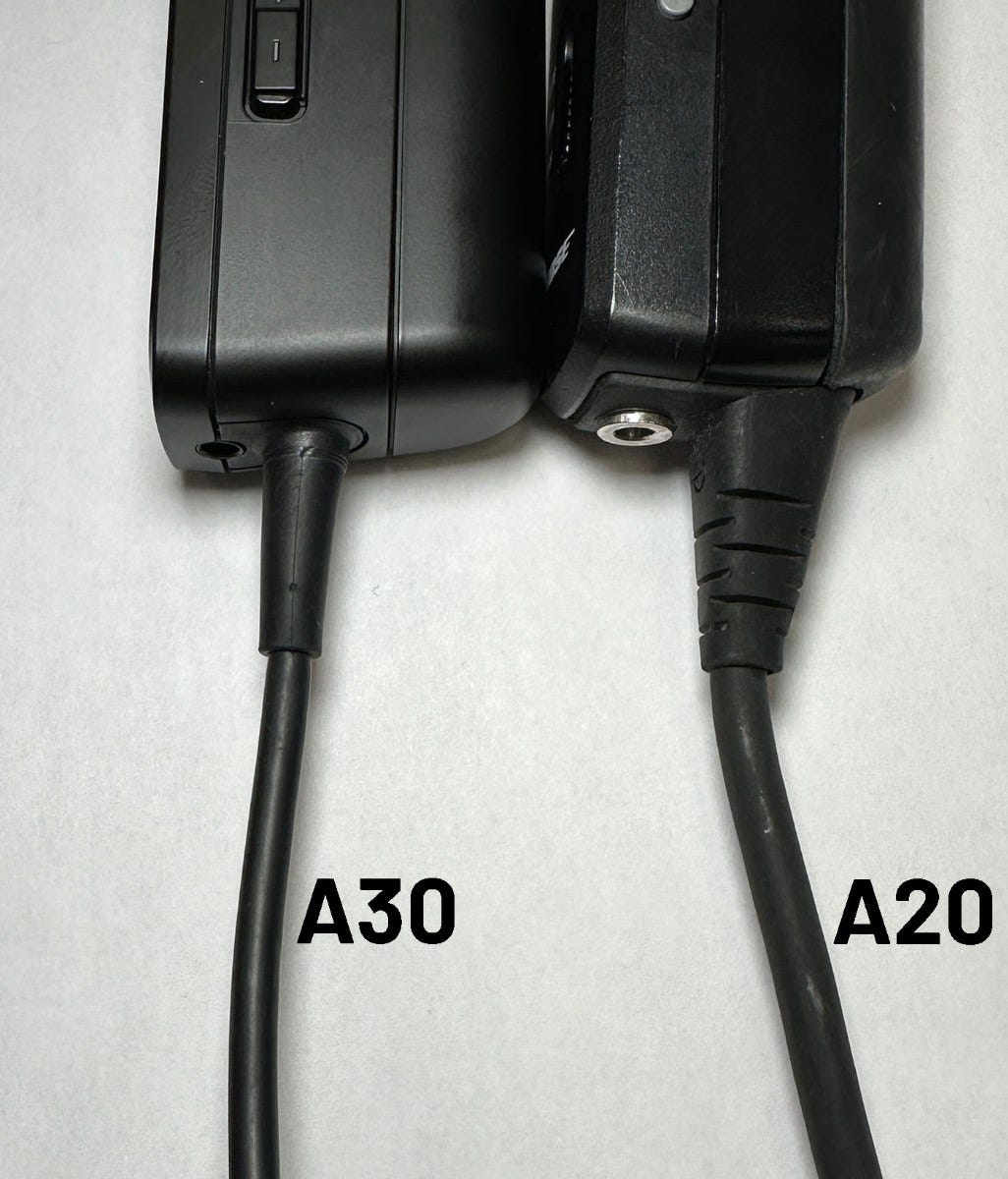When Bose told us about the A30, the legendary audio company’s first new around-ear headset in over a decade, we knew we had a lot of testing to do. A headset is one of the few products that gets used on every single flight, so our standards for evaluating them are sky high. Sure, it has to be quiet and comfortable, but it also has to be incredibly reliable: we expect to turn it on and leave it on, without having to make adjustments or worry about it failing.
That reliability has always been a major strength for Bose, whose A20 headset has set the standard in aviation for over a decade. Could the A30 match its predecessor’s performance? The only way to answer that question is to fly it in a variety of airplanes, because test benches really don’t tell you much about how a headset feels. Here’s what we found after flying it in five different airplanes, ranging from a single engine piston to a twin engine jet.
The most comfortable headset we’ve worn
 Let’s be clear from the start: the A30 is not a radical departure for Bose. This is a traditional, around-the-ear ANR headset with soft ear seals and a familiar-looking control box. It’s not wireless, it’s not made out of carbon fiber, and there are no VR goggles. While that might disappoint a few gadget geeks, we predict it will satisfy the vast majority of pilots. The A20 was a winner and Bose has doubled down on that, improving key features but without sacrificing performance. That’s a smart move.
Let’s be clear from the start: the A30 is not a radical departure for Bose. This is a traditional, around-the-ear ANR headset with soft ear seals and a familiar-looking control box. It’s not wireless, it’s not made out of carbon fiber, and there are no VR goggles. While that might disappoint a few gadget geeks, we predict it will satisfy the vast majority of pilots. The A20 was a winner and Bose has doubled down on that, improving key features but without sacrificing performance. That’s a smart move.
The first thing we noticed on our test flights was the improved comfort. The A30 has noticeably less side pressure than the A20 (which was already our favorite in this category)—20% less squeeze by Bose’s measurements. We believe it, especially after some long test flights. On 3+ hour trips, even the A20 could start to feel a little uncomfortable, with hot spots on the side of your head or a dull headache. But with the A30, we basically forgot we were wearing a headset. The new aluminum alloy headband and center spring mechanism, combined with really soft ear seals, work great.
The Bose A30 also feels lighter, even if the specs show it’s almost the exact same weight at the A20. The difference seems to be in how the weight is distributed. The headset feels more balanced overall, and the new headband pads seem to spread out the weight more evenly.
One other small change has an impact on comfort: the cable. It’s noticeably thinner and lighter, which makes it less prone to tangling or twisting. That also means less pull on the earcup and thus less perceived weight. This seemed really insignificant when we read about it, but once you wear the headset it’s a nice improvement.
Now with Digital ANR
Bose pioneered active noise reduction (ANR) over 30 years ago, and since then they have produced some of the quietest headsets in aviation. The A30 offers something entirely new, though: digital ANR. This doesn’t fundamentally change how ANR works—it still uses microphones to listen to the noise and speakers to create a sound wave that cancels that noise—but it operates in a slightly different way. Noise reduction is a personal thing that has much more to do with how you perceive it than how a lab measures it (in fact, there really are no recognized standards for measuring ANR performance). So once again, we took it flying to see how it works in the real world.
 While the A30 didn’t blow us away with radically better noise reduction, it did work quite well and in a wider range of airplanes. For example, Sporty’s famous Piper Aztec is a very loud airplane, pegging the noise meter at over 115 db on takeoff. Many ANR headsets struggle with this noise level, especially coming from two props on either side of the pilot, and we’ve experienced painful feedback or annoying buzzing in the past. The A30 took it in stride: our test pilots reported a quiet enough flight that they could actually turn down the radio volume. That’s saying something for the Aztec.
While the A30 didn’t blow us away with radically better noise reduction, it did work quite well and in a wider range of airplanes. For example, Sporty’s famous Piper Aztec is a very loud airplane, pegging the noise meter at over 115 db on takeoff. Many ANR headsets struggle with this noise level, especially coming from two props on either side of the pilot, and we’ve experienced painful feedback or annoying buzzing in the past. The A30 took it in stride: our test pilots reported a quiet enough flight that they could actually turn down the radio volume. That’s saying something for the Aztec.
In fact, the A30 did a great job canceling noise in every airplane we flew, from Cessna 172 to Cirrus to Pilatus to Citation. While some headsets seem tuned for a specific noise environment, this one will take whatever you throw at it. For extra customization, the A30 offers three different ANR modes: high, medium, and low. Most GA pilots will use high for all their flying—we tried medium in the Cirrus and didn’t last long—but for pilots flying business jets or airliners, the medium setting is a great option. It cancels enough noise to keep ATC communications clear, but without masking important audio cues. Low would be used only when on the ground and communicating with crewmembers not wearing a headset, perhaps for an airline pilot when parked at the gate.
It’s also worth pointing out that this improved performance comes without sacrificing battery life (still an industry-leading 45 hours) or audio quality (still the best we’ve heard). That’s a lot harder than it might seem, and really makes a difference over the life of the headset.
There’s one last benefit to digital ANR. Because it’s essentially software, it can be upgraded in the future if new features or performance enhancements become available. This is a process that’s familiar to anyone with a smartphone, and some headset manufacturers like Lightspeed have recently introduced it as well. If you open the battery compartment on the A30’s control module you’ll notice a micro-USB port that can be used for this purpose. This port can also be used to power the headset in an emergency, which we successfully did using a Flight Gear backup battery.
Talk-through and mic options
For pilots of cabin class airplanes, Bose has brought its popular “tap control for talk-through” feature over from the ProFlight headset. This allows pilots to talk with passengers or cabin crew without removing the headset: simply double tap one earcup and you’ll hear normal audio from outside that ear. When your conversation is over, double tap again and the ANR returns to normal. This is intuitive and we used it often on our Citation test flights. One note: you don’t want this feature turning on by accident in a noisier airplane, so it is off by default. To enable it, open the battery compartment and slide the small plastic switch for talk-through to ON.
 Bose has also made it much easier to switch the microphone and cable from the left side (standard) to the right side (helpful for flight instructors or first officers who sit in the right seat often). This was possible on the A20, but it required a screwdriver and some patience. Now it’s easy: just flip two small clips and the whole mic assembly disconnects; reverse the process on the other side and your headset is ready to go.
Bose has also made it much easier to switch the microphone and cable from the left side (standard) to the right side (helpful for flight instructors or first officers who sit in the right seat often). This was possible on the A20, but it required a screwdriver and some patience. Now it’s easy: just flip two small clips and the whole mic assembly disconnects; reverse the process on the other side and your headset is ready to go.
Why does this matter? Many pilots don’t know that Bose headsets are not supposed to be reversed—there is in fact a dedicated left and right earcup. If you look closely, you’ll see that the earcups are tilted to match the shape of your ear. Helpfully, the A30 now shows an L and R on the inside of each earcup so you know which way to wear the headset. If you regularly fly in the right seat, don’t just flip the headset around; take the time to move the microphone.
A great headset for turbine airplanes
After multiple flights in a Cessna 172, a Cirrus SR22, and a Piper Aztec, we were impressed with the Bose A30’s performance in piston airplanes. It was comfortable, quiet, and all communications were extremely clear. But this headset is equally at home in turbine airplanes, so we took it flying on some longer trips in both a Pilatus PC-12 turboprop and a Cessna Citation twin jet. We came away very impressed—this is an ideal headset for jet pilots, maybe our top pick.
Bret Koebbe, a captain in Sporty’s flight department, had this summary from a recent trip: “I had a great experience with the A30 during today's Citation flight. All communications sounded crystal clear, to the point where it was a noticeable improvement over the ProFlight and A20.”
We started with the ANR in the low position and one ear on talk-through for engine start and taxi, which was great when full ANR is overkill and you want to listen to more subtle details going on at low engine power settings. We then switched to high ANR before takeoff, and that made a noticeable (very nice) difference at high power settings in the jet.
I also wore the A30 on a 750-mile flight in a Pilatus PC-12 to see how it would perform in a turboprop. The biggest difference compared to both an A20 and a Lightspeed Delta Zulu was comfort—on a long flight, the reduced side pressure and low weight really made a difference. Medium ANR mode was usable, but still pretty loud with a big PT-6 engine up front; I used high for almost the entire flight. The talk-through function was great, though, as I could easily talk with a passenger when they popped their head into the cockpit, but all while keeping the headset secure on my head. I can see myself using that feature frequently.
 One final feature that will be welcomed by professional pilots is durability. Light weight does not mean fragile—the Bose A30 is also built to last, so we’re confident it can withstand years of daily use on airline flight decks. The thinner cables, for example, are still incredibly rugged and feature a Kevlar core. The A30, like the A20, is TSO certified so in addition to meeting most airline requirements it has passed over 140 different tests. It also comes with a high quality case to keep the headset protected, and is backed by Bose’s 5-year warranty.
One final feature that will be welcomed by professional pilots is durability. Light weight does not mean fragile—the Bose A30 is also built to last, so we’re confident it can withstand years of daily use on airline flight decks. The thinner cables, for example, are still incredibly rugged and feature a Kevlar core. The A30, like the A20, is TSO certified so in addition to meeting most airline requirements it has passed over 140 different tests. It also comes with a high quality case to keep the headset protected, and is backed by Bose’s 5-year warranty.
Conclusion
What are the cons? Well, like its predecessor, the A30 is not inexpensive ($1249). But as one Sporty’s customer said, “you get what you pay for.” We would agree—we regularly see Bose headsets last 8 years with proper care, so the investment usually pays off. Bose also stands behind their products with excellent support.
As far as features, you’ll notice there is no carbon monoxide detector on the A30 like there is on the Lightspeed Delta Zulu. That may be a disappointment for some pilots, although every airplane we flew already had a CO detector in the form of a Sentry ADS-B receiver or a dedicated CO sensor.
We would like to see Bose add support for its Connect app on the A30. This free app, compatible with ProFlight, allows two headsets to connect to one device—helpful for allowing both pilot and co-pilot to hear electronic flight bag alerts.
But these are minor complaints. Overall, the Bose A30 Aviation Headset earns the ultimate endorsement from the product testing team here at Sporty’s: it just works. We took it flying in multiple airplanes with multiple pilots, and every flight was a success. No bugs, no instruction manual required, and no learning curve. Everyone came back raving about the comfort and clarity of the headset. That’s not something we can say about most products we test.
If you liked the Bose A20, you’ll love the Bose A30.
Watch our Product PIREP video below:





